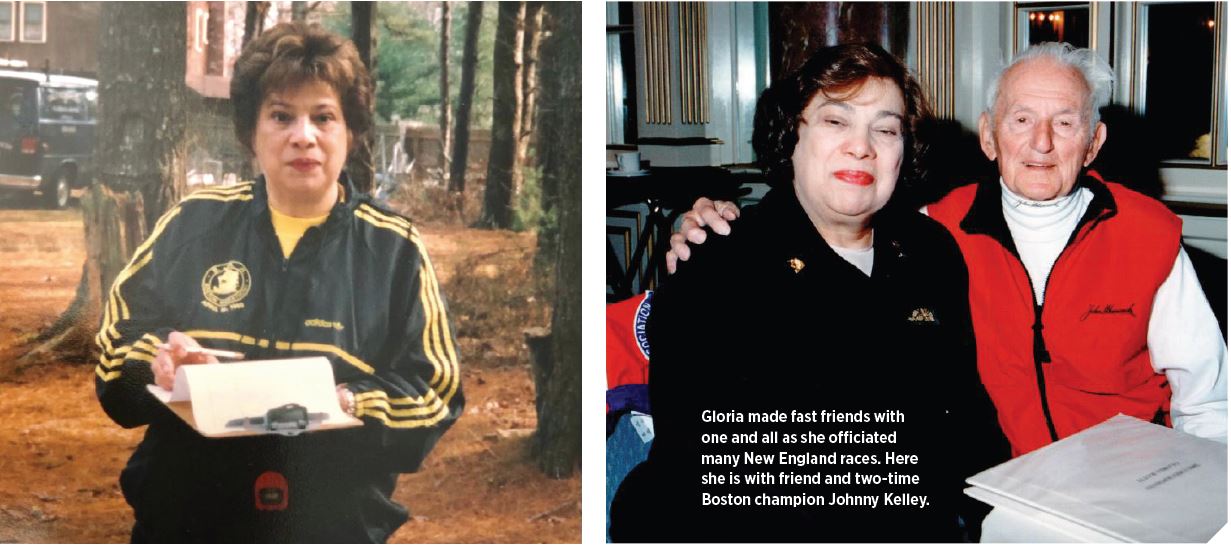
officials to stay at their posts and record the names and times of all finishers coming through the chute, not just the traditional top 100 as had been the norm. A forward thinker, Gloria knew finishing a marathon—especially the Boston Marathon—was a noteworthy accomplishment and wanted to honor all athletes for their effort. Ever since, the marathon has kept track of all who’ve crossed the famed Boylston Street finish line.
Gloria Ratti wasn’t afraid to share her opinion, and oftentimes it was just the advice that those in the sport needed to hear. Noticing a lack of support for women runners in the 1970s, Gloria stepped in to provide assistance and recognition as the women’s running movement was beginning to take shape. Her sense of loyalty to the race, running community, and women runners was evident.
Understanding that women’s checkpoints along the race route weren’t maintained as diligently as their male counterparts, Gloria devised an innovative system to keep track of the women’s leaders and better showcase their talents—an especially important duty after the infamous 1980 Boston Marathon. Stationing officials all along the course, Gloria trained each to accurately identify and record athletes as they passed by. Long before tracking
technology became the norm at road races around the world, Gloria established a system that would uphold the integrity and authenticity of her city’s race. The system would soon expand to include the wheelchair division, and ultimately helped illustrate how each race unfolded, giving members of the press access to pertinent race information that helped bring their stories to life.
Gloria’s efforts left a meaningful mark on all at the Boston Athletic Association, and she was later elected to the B.A.A. Board of Governors in 1987, not only representing the organization, but more importantly her native city and running community. In 1993, after retiring from her government work with the C.I.A. (which she never disclosed details of), Gloria joined the B.A.A. as a full-time employee. She took tremendous pride in working for the organization, often wearing its trademark unicorn emblem on her lapel, scarf, and handbag.
Gloria’s fingerprints can be found on many decisions that altered the direction of the Boston Marathon and running history. In addition to her innovations in timing and scoring, it was Gloria who staunchly fought to ensure that equal prize money was offered to top finishers beginning in 1986, when the race shifted from amateur

Gloria made fast friends with one and all as she officiated many New England races. Here she is with friend and two-time Boston champion Johnny Kelley